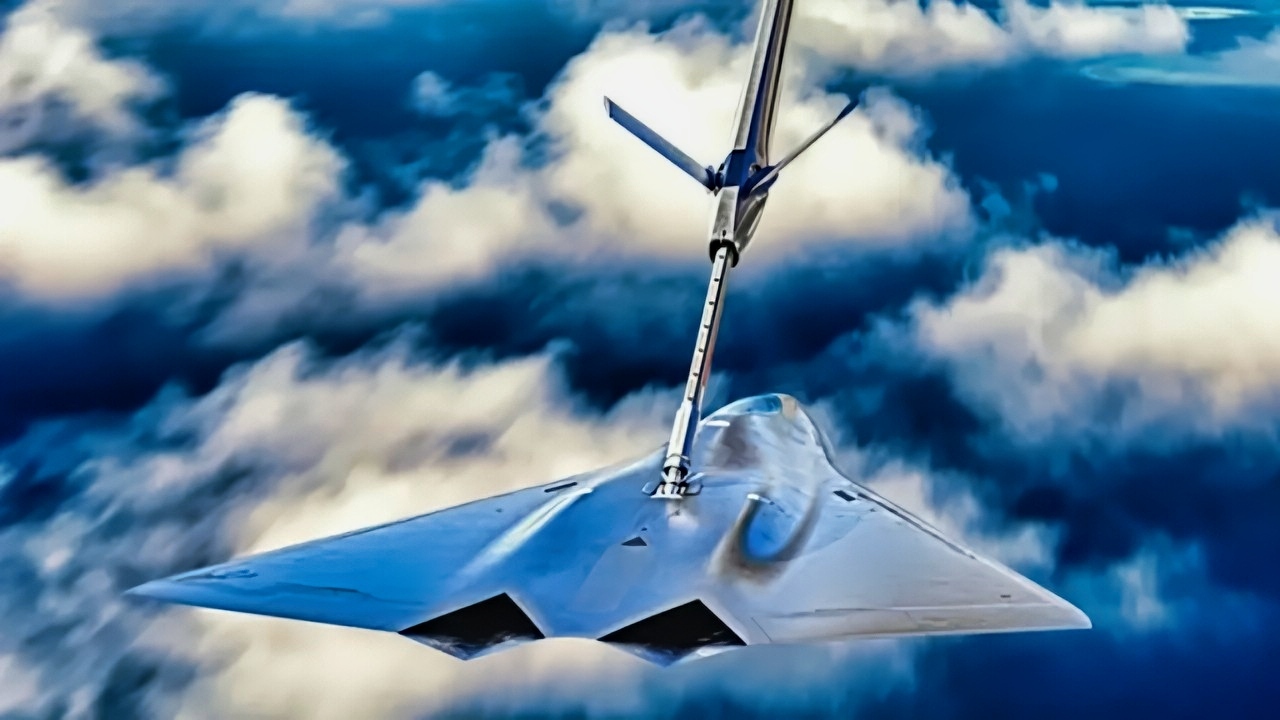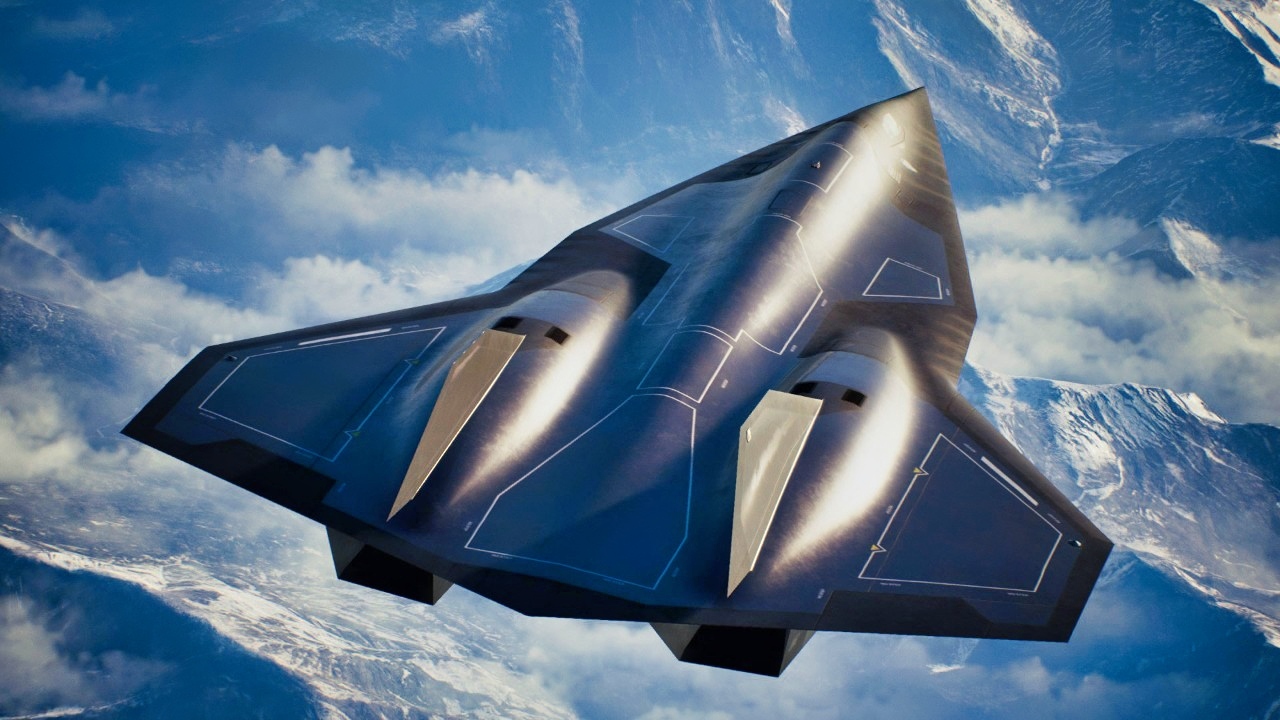Key Points and Summary – The SR-72 “Darkstar” promises revolutionary Mach 6 hypersonic capability, but its massive, and still secret, price tag is sparking major controversy.
-With the Air Force already committed to the multi-trillion-dollar F-35 program and the expensive F-47, the value of another high-cost aircraft is being questioned.

SR-72 Darkstar Plane. Image Credit: Lockheed Martin Handout.
-The justifications for the SR-72 center on two key arguments: its extreme speed makes it far more survivable than any current spy plane, and its versatile design allows it to function as both a reconnaissance platform and a hypersonic strike weapon, a critical capability in a great-power conflict.
Is the SR-72 Darkstar Worth the Cost?
Despite the fact that its mere existence hasn’t even been officially confirmed yet by the US Department of Defense (DOD), the SR-72 “Darkstar” (or “Son of Blackbird”) has captured the imaginations of military aviation buffs and the moviegoing public alike thanks to its unforgettable fictitious appearance in the 2022 cinematic summer blockbuster “Top Gun 2: Maverick,”
The real-life iteration of the SOB is expected to attain a max airspeed in the neighborhood of Mach 6, thus giving it true hypersonic capabilities. However, despite—or perhaps partially because of—the excitement generated by this prospective capability, the SR-72 is also sparking controversy over whether it’ll be worth the hefty price tag that’ll undoubtedly accompany it should it ever go into production.
Bottom Line Up Front (BLUF)
Since the SR-72 doesn’t officially exist yet, its projected cost hasn’t been disclosed; however, it is likely to be around $1 billion due to the advanced materials and technology necessary for its development.
As noted by the ever-savvy Alex Hollings, “According to recent Aviation Week reports in July 2024, a classified Lockheed Martin program that involves a ‘highly complex design and systems integration’ went another $45 million over budget in the second quarter of 2024. Based on Lockheed’s quarterly filing with the US Securities and Exchange Commission, the firm’s total losses associated with this single shadowy program are up to some $335 million since 2022. Those same filings went on to postulate that losses may continue to accrue as the company faces ‘advanced procurement costs’ moving forward.”
That understandably raises some questions about whether such expenses are worthwhile in light of the substantial funds already being spent to meet the US Air Force’s current and near-future aircraft technology needs. Consider the following:

A joint team consisting of F-35 Patuxent River Integrated Test Force flight test members, U.S. Sailors and Marines, and the crew of the Japan Maritime Self-Defense Force Izumo-class multi-functional destroyer JS Kaga (DDH-184) are executing developmental sea trials in the eastern Pacific Ocean to gather the necessary data to certify F-35B Lightning II short takeoff and vertical landing aircraft operations. While aboard the MSDF’s largest ship, the Pax ITF flight test team has been gathering compatibility data for analysis in order to make recommendations for future F-35B operational envelopes, further enhancing the Japanese navy’s capabilities. The results of the testing will contribute to improved interoperability between Japan and the United States, strengthening the deterrence and response capabilities of the Japan-U.S. alliance and contributing to peace and stability in the Indo-Pacific region. Japan is an F-35 Joint Program Office foreign military sales customer planning to purchase 42 F-35Bs. The F-35 Joint Program Office continues to develop, produce, and sustain the F-35 Air System to fulfill its mandate to deliver a capable, available, and affordable air system with fifth-generation capabilities.
-The F-35 Lightning II—one of America’s two 5th Generation stealth fighters, along with the F-22 Raptor (which is no longer in production)—has a staggering lifetime program cost in excess of $2 trillion USD.

A U.S. Air Force F-15EX Eagle II, assigned to 85th Test and Evaluation Squadron, Eglin Air Force Base, Florida, lands at Kadena Air Base, Japan, July 16, 2025. The F-15EX plays a critical role in modern warfare, providing substantial additional capacity for long-range fires, sensors, and electronic warfare in contested areas, complementing 5th generation fighters. (U.S. Air Force photo by Airman Nathaniel Jackson)
-The F-15EX Eagle II (the 4.5 Generation upgrade of the 4th Generation F-15E Strike Eagle), which is meant as a stopgap to address the relative shortage of stealth fighters in the US military arsenal, costs $90 million per unit

F-47 Lockheed Photo. Image Credit: Lockheed Handout.
-The 6th Generation F-47 Next Generation Air Dominance (NGAD) fighter is expected to cost three times as much as the F-35.
So, in light of those financial figures, what could be the justification and rationalization for spending even more taxpayer dollars on the Darkstar?
Justification #1: Survivability
The motto “Speed is life” is mainly associated with fighter pilots, but spy pilots can appreciate the saying as well. The USAF’s current spy plane, the Lockheed U-2 “Dragon Lady,” is not only long in the tooth (it made its maiden flight in 1955, and the last airframe was built in 1989), but it’s also slow, with a maximum airspeed of Mach 0.715.
This lack of speed was undoubtedly a contributing factor when the Soviets shot down U-2 pilot Francis Gary Powers with a surface-to-air missile (SAM) in 1960.
After his return home from his Soviet imprisonment ordeal, Gary Powers developed a good working relationship with Clarence Leonard “Kelly” Johnson, the aerospace engineering genius and mastermind behind Lockheed’s (now Lockheed Martin’s) iconic Skunk Works program.
One can reasonably surmise that Mr. Powers’s misfortune was one of the motivating factors behind Mr. Johnson’s decision to develop the SR-71 Blackbird (the inspiration for the “SOB” sobriquet for the SR-72), which, 27 years after its retirement, still holds the world record as the fastest air-breathing aircraft ever built—officially Mach 3.2 but unofficially at or above Mach 3.5.
Unlike the SR-71 or the U-2, the SR-72 will be unmanned, thus not putting any human pilots’ lives at risk. Still, even for an unmanned aerial aircraft, the ability to avoid getting shot down and thus sparing its country of origin from embarrassment and exorbitant replacement costs alike is highly desirable.
Justification #2: Versatility
“Flexibility is the key to airpower,” quoth the famous dictum of early 20th-century airpower theorist Gen. Giulio Douhet. Or as the one military witticism goes, “Semper Gumby (Always Flexible”). Going hand-in-hand with flexibility is versatility, and the SR-72 could conceivably offer a good bit of versatility in exchange for its high cost.
Just like its legendary predecessors, the Darkstar is still envisioned first and foremost as an intelligence, surveillance, and reconnaissance (ISR) platform; it’s also reportedly being considered for missions for which neither the Dragon Lady nor the Blackbird was ever used, such as bomber or strike aircraft roles.
The aspiring hypersonic warbird could quite possibly support Lockheed Martin’s new High-Speed Strike Weapon (HSSW), which can fire hypersonic weapons faster than any other system and instantly achieve hypersonic speeds; for good measure, it can maintain these speeds for longer periods. Presumably, the plane would fire the missiles at an angle that avoids the risk of the warbird running into (and afoul of) its own ordnance.
Ergo, if the SOB and the HSSW were to become a viable tandem, that would be an ideal tag team for striking targets in hotly contested battle spaces where manned aircraft would be too slow and too risky.
About the Author: Christian D. Orr, Defense Expert
Christian D. Orr is a Senior Defense Editor. He is a former Air Force Security Forces officer, Federal law enforcement officer, and private military contractor (with assignments worked in Iraq, the United Arab Emirates, Kosovo, Japan, Germany, and the Pentagon). Chris holds a B.A. in International Relations from the University of Southern California (USC) and an M.A. in Intelligence Studies (concentration in Terrorism Studies) from American Military University (AMU).
More Military
China’s New J-36 Fighter Has 1 Mission
America Wants ‘Drone’ Aircraft Carriers
Putin Might Have Made Strong Thanks to Drone Test in Poland











Hfinn
August 26, 2025 at 11:43 pm
“gloss over”, not “glance over”
MS Word spellcheck and grammar check are not s replacement for having a competent editor, and no, you can’t edit your own work.
T. Dougherty
August 27, 2025 at 9:26 am
The A-12, predecessor of the SR-71 was already underway when Gary Powers was shot down in May, 1960. The program for a U-2 successor was started at Lockheed in 1957. Twelve A-12 aircraft were ordered in February, 1960
Warren LaFrance
August 27, 2025 at 10:47 am
One of justification is that satellites are no longer guaranteed to survive a conflict and having this option to penetrate an enemies domain is critical.
JOEL CARLSON
August 27, 2025 at 4:54 pm
Very good. More than 1 ability to Destroy our enemies, is essential. Don’t forget our Neutron Bomb!!!